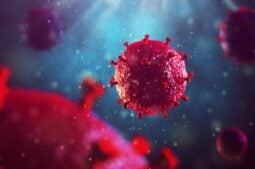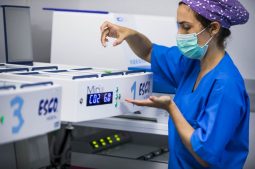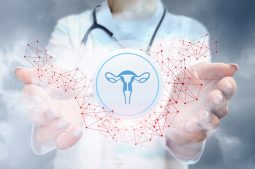

Anyone starting out on a cycle of IVF fertility treatment is prepared for it to be stressful, and understanding the stages of the process and what’s happening each step of the way can help to alleviate this. You may expect that the long-awaited day when the embryo is transferred back to your uterus is the… View Article

In vitro fertilisation, or IVF, is the most well-known and successful fertility treatment available for most people suffering from infertility. For anyone considering embarking on IVF, it is a major life decision involving emotional, financial and organizational considerations. It’s therefore crucial to know what to expect. Most of us understand that IVF consists of a… View Article

At IVI we have been by the side of our patients for many years. Listening, asking questions, and attending to their needs. Thanks to this knowledge, we are now taking a step forward, thanks to which we can affirm that we are going to transform the way we understand an assisted reproduction treatment, while offering… View Article

In vitro fertilisation (IVF) works just the same for lesbian couple IVF as for any other couple. The only slight difference is that, rather than donor sperm being an option, it is a necessity. When a lesbian couple embarks on the exciting journey of family building, there are plenty of options for fertility treatments that… View Article

Reciprocal IVF is an adaptation of the well-established IVF technique in which a woman’s eggs are retrieved, fertilised in the laboratory and one of the resulting embryos is transferred to her uterus. Reciprocal IVF is a method whereby a lesbian couple, or trans men who have functional female reproductive organs, can share parenthood. In essence… View Article

These days more and more people are aware that when a couple experiences problems with fertility, it’s equally likely to be an issue with the male or female partner. In fact, 30% of all cases of infertility come down to male factors, 30% female, with the remainder unexplained. Naturally, if you’ve been trying for a… View Article

We at IVI have a strong and ongoing commitment to help all individuals and couples achieve their family dreams. We support family diversity and we welcome the European Union’s first ever EU strategy, published in 2020, to achieve equality for the LGBTIQ (lesbian, gay, bisexual, trans, non-binary, intersex and queer) community. For many people in… View Article

When you’re trying to get pregnant, you’re sure to know roughly, if not exactly, when you are due to ovulate. You’re probably also already aware that the best time to conceive is the few days before, the day that you ovulate and the day after. This is because, odd as it may seem, sperm live… View Article

Treatment with growth factor rich plasma (GRP) is an adaptable procedure in the field of regenerative medicine. It is already used in various fields such as dentistry, traumatology, ophthalmology or cosmetic surgery, etc. Now IVI Regenerate is a new alternative used in reproductive medicine. “Growth factor rich plasma (GRP) has a positive effect in the… View Article

Motherhood is a desired and long-awaited moment for hundreds of women. But the reality is that for some it is a rocky road with obstacles along the way. Assisted reproduction is one of the most avant-garde fields of medicine, in which research and technology are at the service of our patients’ dreams. For this reason,… View Article
